
The BLANKET SLEEPER or FOOTIE PAJAMA (also known by many other synonyms and trade names ) is a type of especially warm sleeping garment worn primarily during the winter in the United States
 and
Canada
and
Canada
 . The garment is worn especially by infants and young children
.
. The garment is worn especially by infants and young children
. Typically, but not always, the blanket sleeper consists of a loose-fitting, one-piece garment of blanket -like material, enclosing the entire body except for the head and hands. It represents an intermediate step between regular pajamas , and bag-like coverings for infants such as buntings or infant sleeping bags (Terminology and Variations sections below). Like bag-like coverings, the blanket sleeper is designed to be sufficiently warm as to make regular blankets or other bed covers unnecessary, even in colder weather. Unlike such coverings, the blanket sleeper has bifurcated legs to allow unhindered walking (or crawling ).
While no single feature is universal (see Terminology ), distinguishing a blanket sleeper from regular pajamas usually include:
* One-piece construction with long sleeves and legs. * Attached bootees enclosing the wearer's feet . * Composition from relatively thick, heavy fabric .
Although any sleeping garment with some or all of these characteristics could be called a blanket sleeper , the term is most commonly applied to a range of styles that deviate relatively little from the same basic design. (The features of this design are described in the Features section, below.)
CONTENTS
* 1 Features
* 2 Design considerations
* 2.1 Materials
* 3 Sizes, gender differences, and availability * 4 Terminology * 5 History
* 6 Variations
* 6.1 Minor variations
* 7 Blanket
 sleepers in popular culture
sleepers in popular culture * 8 See also
* 8.1 Related garments
FEATURES
Features of the typical blanket sleeper often include:
* Usually made of a napped synthetic fabric, such as polyester or polar fleece ; however sleepers made from heavier natural fabrics such as cotton are also available, they are not common in North America
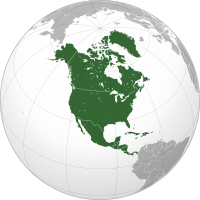 due
to stringent regulations regarding flammability.
* Loose fit. On smaller sizes, the hip area may be made especially
loose to accommodate a diaper . The crotch is usually cut especially
low.
*
Raglan sleeve
due
to stringent regulations regarding flammability.
* Loose fit. On smaller sizes, the hip area may be made especially
loose to accommodate a diaper . The crotch is usually cut especially
low.
*
Raglan sleeve
 s .
* Snug rib-knit collar and wrist cuffs .
* Usually made in one or more solid, bright colors, or
screen-printed with graphic designs. There may be a front panel with a
single, elaborate printed design, either covering the chest, or
forming the entire front portion of the torso and legs. The sleeves
may be a different color from the rest of the garment. Stripes are
sometimes seen, most commonly on the collar and cuffs.
* Soles of the feet made from a (usually white) vinyl fabric lined
with (synthetic) felt , for improved durability and slip-resistance.
This can be solid vinyl with a rough textured surface, or a
vinyl-dotted fabric such as Jiffy Grip.
* Optional toe caps , made from the same fabric as the soles of the
feet, and covering the top front portion of the foot, for improved
durability.
* Elastic to make the leg portions snug around the ankles.
* A zipper running vertically down the front of the garment, from
the neck opening to the inside or front ankle of one of the legs
(usually the left), designed to make it easy to put on and take off.
On teen and adult sizes, the zipper usually instead runs from the neck
to the crotch.
* Optional snap tab where the zipper meets the neck opening. This
is a small tab of fabric sewed to the garment on one side of the
zipper (usually the right), and fastening to the other side with a
snap fastener , designed to prevent discomfort from the zipper slider
coming into contact with the wearer's chin and deter access to the
zipper.
* Optional decorative applique on one side of the chest (usually the
left).
* Optional hood (mainly on women's sleepers in the 1960s and 1970s
and costume sleepers)
* Optional mittens/mitts (mainly on infant and costume sleepers)
s .
* Snug rib-knit collar and wrist cuffs .
* Usually made in one or more solid, bright colors, or
screen-printed with graphic designs. There may be a front panel with a
single, elaborate printed design, either covering the chest, or
forming the entire front portion of the torso and legs. The sleeves
may be a different color from the rest of the garment. Stripes are
sometimes seen, most commonly on the collar and cuffs.
* Soles of the feet made from a (usually white) vinyl fabric lined
with (synthetic) felt , for improved durability and slip-resistance.
This can be solid vinyl with a rough textured surface, or a
vinyl-dotted fabric such as Jiffy Grip.
* Optional toe caps , made from the same fabric as the soles of the
feet, and covering the top front portion of the foot, for improved
durability.
* Elastic to make the leg portions snug around the ankles.
* A zipper running vertically down the front of the garment, from
the neck opening to the inside or front ankle of one of the legs
(usually the left), designed to make it easy to put on and take off.
On teen and adult sizes, the zipper usually instead runs from the neck
to the crotch.
* Optional snap tab where the zipper meets the neck opening. This
is a small tab of fabric sewed to the garment on one side of the
zipper (usually the right), and fastening to the other side with a
snap fastener , designed to prevent discomfort from the zipper slider
coming into contact with the wearer's chin and deter access to the
zipper.
* Optional decorative applique on one side of the chest (usually the
left).
* Optional hood (mainly on women's sleepers in the 1960s and 1970s
and costume sleepers)
* Optional mittens/mitts (mainly on infant and costume sleepers)Although widely thought of as something worn only by the very young, blanket sleepers are also sometimes worn (in decreasing order of frequency) by school-age children, teens, and even adults. (See Sizes, gender differences, and availability , below.)
Although footed, one-piece garments in a variety of fabrics and styles are used in many countries as infant sleepwear, the specific range of styles with which the term blanket sleeper is usually associated, the term itself, and the phenomenon of children older than infancy wearing footed, one-piece sleeping garments, are all largely unique to North America .
DESIGN CONSIDERATIONS
Blanket sleeper
 s are usually intended as practical garments, worn
mostly by younger children and only in the home. Style and fashion
thus tend not to be important in its design, and the basic design of
the typical blanket sleeper has changed little over the years.
s are usually intended as practical garments, worn
mostly by younger children and only in the home. Style and fashion
thus tend not to be important in its design, and the basic design of
the typical blanket sleeper has changed little over the years. The sleeper serves mainly to keep the wearer warm at night, even in the absence of blankets and bed covers. The sleeper covers the entire body except for the head (except in certain cases where a hood is present) and (in most cases) hands (except in cases where a sleeper has attached mitts,mostly on infant sizes), where it is snug at the neck and wrists. The use of a zipper closure in place of buttons or snap fasteners also further retains warmth by eliminating drafts. This is especially important for infants, for whom loose blankets may pose a safety hazard (including increasing the risk of SIDS ), and possibly for older children, who may still be too young to be relied upon to keep their own sleepwear or bed covers adjusted so as to prevent exposure to the air of bare skin. This is reflected in advertisements by blanket sleeper manufacturers, which often emphasize that their garments "can't be kicked off", or that "no other covers are needed". The permanently attached feet can also be a beneficial feature for children who are prone to get out of bed in the morning before their parents are awake, and are too young to be relied upon to put on slippers or other footwear to keep their feet warm,as well as for adults who find putting on,and/or wearing socks in bed too bothersome, yet still want their feet covered when getting out of bed in the morning. Blanket sleepers without feet allow more room for growth and reduce the possibility of slipping. Also, children with larger or smaller feet find a better fit.
The blanket sleeper is designed so that it can be worn either by itself as a standalone garment, or as a second layer worn over regular pajamas or other sleepwear. The one-piece design is simple to launder and has no detachable pieces that could be individually misplaced.
Yet another potential benefit of the blanket sleeper is that it may help prevent infants from removing or interfering with their diapers during the night. This can also apply to older children with certain developmental disabilities, such as Angelman syndrome
 . In particular,
parents of Angelman children have been known to take such additional
measures as cutting the feet off the sleeper and putting it on
backwards, and/or covering the zipper with duct tape . Some specialty
locking clothing and other adaptive clothing purveyors offer blanket
sleepers, with or without feet, for adults with dementia or other
disabilities, for similar reasons.
. In particular,
parents of Angelman children have been known to take such additional
measures as cutting the feet off the sleeper and putting it on
backwards, and/or covering the zipper with duct tape . Some specialty
locking clothing and other adaptive clothing purveyors offer blanket
sleepers, with or without feet, for adults with dementia or other
disabilities, for similar reasons. Blanket sleepers may also appeal to cultural mores relating to body modesty . This can, for example, be a consideration for some parents when siblings sleep in the same room and/or bed.
MATERIALS
The range of materials used for mass-produced blanket sleepers for children is severely limited, as a result of stringent U.S. government-imposed flammability requirements. Essentially the only materials used since the 1950s are polyester , acrylic , and modacrylic , with polyester dominating. Unfortunately, this can have a negative impact on comfort for many wearers, particularly children with eczema . A small number of sleepers are made from cotton.
Adult-size sleepers, especially those sold by small Internet businesses, can be found in a wider range of materials, including natural fabrics such as cotton flannel . Some web businesses also offer sleepers in natural fabrics for children, but only outside the U.S. In particular, special eczema sleepsuits for children, made of cotton and with built-in mitts designed to prevent scratching, are available from specialty stores in the UK .
The fabrics used in most blanket sleepers have a strong tendency to pill . Although this does not adversely affect the garment's functional utility, it has the effect that a used garment can be clearly, visually distinguished from a new one after only a small number of wearings or washings.
Decorative features such as appliques or printed designs usually follow juvenile themes, and are designed to make the garments more attractive to the children who wear them. Some adult sleepers can also have appliques on them, but those tend to be from Internet clothing suppliers who offer custom-made sleepers and tend to be of favorite cartoon characters or items that the wearer had in childhood such as teddy bears and animal representatives that they had as pets.
SIZES, GENDER DIFFERENCES, AND AVAILABILITY
In the United States and Canada, mass-produced blanket sleepers for both boys and girls up to size 4 (see US standard clothing size s ) are quite common, and can be found in nearly any department store and online . Sizes larger than 4 are progressively less common, being found in only some stores and online, and usually only seasonally (peaking around October or November). The availability of larger-size sleepers in department stores also varies from year to year.
Alternative sources for larger-size, mass-produced sleepers include Internet auction sites , such as eBay , and certain mail order clothing retailers, such as Lands' End .
Individual blanket sleepers can be marketed either as a unisex garment, or as a garment intended for one gender. Even in the latter case, however, there is often no difference stylistically between sleepers marketed specifically for boys, and ones marketed specifically for girls. (The size numbers are also consistent, as, although there are slight differences in the meanings of size numbers between boys and girls in the U.S. standard clothing size system, these are too small to matter in the case of a garment as loose-fitting as a blanket sleeper.) Occasionally, however, sleepers marketed for girls may include effeminate decorative features such as lacy frills, and sleepers with screen-printed front panels may feature images of media characters appealing primarily to children of one gender. Also, the ranges of colors available may be different between the genders, in particular pink sleepers are rarely worn by boys due to a cultural association of that color with femininity. Unisex designs and colors offer a more sustainable option allowing the most use over time.
Blanket sleepers for adult women used to be relatively uncommon, but since 2010s have increased in popularity and can be found in many department stores, usually in the colder months.
Mass-produced blanket sleepers for adult men are more rare. However, major home sewing pattern publishers sometimes offer patterns for conventionally styled blanket sleepers in men's sizes, and in the Internet Age a cottage industry has developed, with several websites offering blanket sleepers manufactured on a small scale for men as well as women and children. Also, mass-produced, unisex-styled blanket sleepers marketed for women are sometimes purchased and worn by men, although the difference in the size ranges between men and women means that this option is available only to men of smaller stature.
The blanket sleeper can be a subject of interest, particularly among the AB/DL community .
TERMINOLOGY
The terminology relating to blanket sleepers can be confusing, and inconsistent between different speakers.
The terms sleeper and blanket sleeper are sometimes used interchangeably. Alternatively, a distinction may be made between the lighter-weight (footed, one-piece) sleepers worn by infants in warmer weather, and the heavier blanket sleepers worn by both infants and older children, primarily in colder weather. (In the loosest usage, sleeper by itself can mean any infant sleeping garment, regardless of form or features.) Similarly, some people consider a blanket sleeper to be one-piece by definition, whereas a sleeper could be made either in one piece, or in two pieces meeting at the waist.
When blanket is omitted, either the singular form sleeper or the plural form sleepers may be used to refer to a single garment. When blanket is included, however, a single garment is usually referred to using the singular form.
The terms (blanket) sleeper and footed pajamas may be used interchangeably. (This reflects the North American practice of referring to nearly any sleeping garment as pajamas , as blanket sleepers bear little resemblance to the jacket and trouser combination, originating in India
 , that the term pajamas originally
referred to.) Alternatively, sleeper may instead be used more
narrowly than footed pajamas , to exclude footed sleeping garments
that are lighter-weight and/or two-piece, such as footed "ski" style
pajamas.
, that the term pajamas originally
referred to.) Alternatively, sleeper may instead be used more
narrowly than footed pajamas , to exclude footed sleeping garments
that are lighter-weight and/or two-piece, such as footed "ski" style
pajamas. Also, while many people consider built-in feet to be part of the definition of sleeper , garments otherwise meeting the definition but lacking feet are sometimes marketed as footless blanket sleepers .
The term grow sleeper is sometimes used to refer to a two-piece footed sleeping garment with features designed to compensate for growth in the wearer, such as turn-back cuffs, or a double row of snap fasteners at the waist.
Other terms that are used more-or-less interchangeably with blanket sleeper include:
* footed sleeper * footed pj's * feeted/feety/footy/footsie/feetsie/feet pajamas * foot/footed/feet/feeted jammies * footies * feeties * nighties * onesie * pajamas with feet * pajamas with the feet in them * padded feet pajamas * pajama blanket * one-piece pajamas * zip-up pajamas * sleeper/sleeping suit * sleeper blanket * sherpa sleeper * walking blanket * walking sleeper * sleeper walker * oversleeper (used in advertisements by J. C. Penney
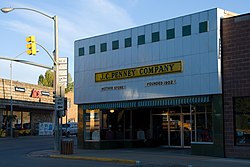 )
* bunny suit
* bunny pajamas
* bunny feet pajamas
* potato mashers
* dormer (older girls' and women's sizes only)
)
* bunny suit
* bunny pajamas
* bunny feet pajamas
* potato mashers
* dormer (older girls' and women's sizes only)Also, a number of commercial brand names have been adopted as genericized trademarks . The best known of these is Dr. Denton s , but others used include "Big Feet", Trundle Bundle (common usage on the Southside of Chicago), and Jama-Blanket .
Formerly used, obsolete terms include:
* night drawers * sleeping drawers * sleeping garment (used in advertisements by Doctor Denton Sleep
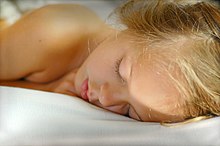 ing Mills)
* coverlet sleeper
* pajunion (used in advertisements by Brighton-Carlsbad)
ing Mills)
* coverlet sleeper
* pajunion (used in advertisements by Brighton-Carlsbad)In British English , the term with a meaning closest to that of blanket sleeper is sleepsuit , but it is also known as a romper suit .
Infant
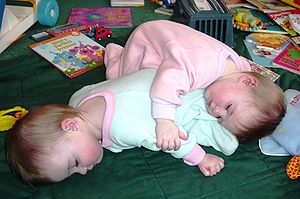 s' garments similar to blanket sleepers, but with the bottom
portion constructed like a bag, without separate leg enclosures, are
usually not considered sleepers , but rather are referred to by other
terms such as baby sleep bag , bunting , sleeping bag , go go
bag , sleep sack , or grow bag .
s' garments similar to blanket sleepers, but with the bottom
portion constructed like a bag, without separate leg enclosures, are
usually not considered sleepers , but rather are referred to by other
terms such as baby sleep bag , bunting , sleeping bag , go go
bag , sleep sack , or grow bag . Infants' garments similar to blanket sleepers, but designed for use as outerwear rather than sleepwear (and usually featuring hoods and hand covers), are referred to by other terms such as pram suit , snowsuit , or carriage suit .
Infants' garments similar to blanket sleepers, but designed for dual use as both sleepwear and playwear, are sometimes known as sleep 'n' play suits.
HISTORY
The origins of the blanket sleeper can be traced at least as far back as the late 19th century, to footed, one-piece sleeping garments for children, then known as night drawers . The first company to mass-produce blanket sleepers was Doctor Denton Sleeping Mills, which started using the term "sleeping garment", for their garments, starting in 1865, and most had buttons instead of zippers (since the zipper wasn't invented until the early 20th century), and trap-doors or butt-flaps in the back, as early blanket sleepers, quite obviously, took on the same basic design as the traditional union-suit (which may have been where the idea of the sleeper originated; as the children's version of their fathers' union-suits). However, the blanket sleeper first took something closely resembling its present form in the early 1950s, when many of the most recognizable features were first adopted, including the use of synthetic fabrics, slip-resistant soles, toe caps, rib-knit collar and cuffs, zipper closure, snap tab, and applique. The term blanket sleeper also first came into common use at this time, although sleeper by itself appeared considerably earlier.
Sleepers made before the 1950s were usually made from knitted natural fabrics, either cotton , wool (especially merino ), or a mixture of both. Commonly used fabrics included outing flannel and flannelette. (Home-made sleepers were typically made out of fabric pieces cut from actual blankets.) The soles of the feet were usually made from the same material as the rest of the sleeper, though sometimes two layers were used for improved durability. The collar and cuffs were usually hemmed , and the sleeper usually closed with buttons , either in the front or in the back.
Natural fabrics were largely abandoned after the Flammable Fabrics Act of 1953, which imposed strict flammability requirements on children's sleepwear sold in the United States, up to size 14. Flammability
 requirements were tightened further in the early 1970s,
and in 1977 the flame-retarding additive TRIS was discovered to be
carcinogenic, prompting a recall, and leading to the abandonment of
such additives and the materials that depended on them for their
flame-resistance.
requirements were tightened further in the early 1970s,
and in 1977 the flame-retarding additive TRIS was discovered to be
carcinogenic, prompting a recall, and leading to the abandonment of
such additives and the materials that depended on them for their
flame-resistance. The popularity of blanket sleepers for older children got a boost in the 1970s and early 1980s due to the energy crises of 1973 and 1979 . Advertisements from this period often emphasized that thermostats could be set lower at night when children slept in blanket sleepers.
VARIATIONS
Blanket sleepers sometimes depart from the standard design by incorporating unusual or uncommon features. An incomplete list of these follows. Drop seat One of the features most commonly associated with blanket sleepers in the public imagination, the drop seat (also known as a trap door or butt flap ) is an opening in the buttocks area, traditionally closing with buttons, designed to allow the wearer to use the toilet without removing the sleeper. Drop seats were very common on sleepers made before the 1950s, but today they are rather rare. (Similar drop seats were also a common feature on the traditional union suit .) Modern versions of the drop seat often replace the buttons with snap fasteners. Snap front/legs Some sleepers, especially in infant sizes, replace the usual front zipper with a front opening closing with snap fasteners. In infant sizes, this opening usually forks at the crotch, and extends down the insides of both legs to the ankles, in order to give access for diaper changes. This design tends to be less effective at eliminating drafts than the zipper closure, and is most often seen on lighter-weight sleepers designed for warmer weather. Some infant-size blanket sleepers made in the 1960s featured an ankle-to-ankle zipper through the crotch, serving a similar function. Snap waist/back Two-piece sleepers sometimes fasten around the waist with snap fasteners. This is most often seen on so-called grow sleepers , made mainly in toddler sizes, with features designed to extend the useful life of the garment by compensating for growth in the wearer. These are usually made in lighter material than one-piece sleepers, with an especially high waist, two rows of snaps on the top piece, a back opening on the top piece also closing with snaps, and turn-back cuffs. Two-piece sleepers made before the 1950s often fastened similarly around the waist with buttons. Drawstring
 cuffs A common feature on sleepers
until about the 1930s was turn-back cuffs closing at the ends with
drawstrings , designed to fully enclose the wearer's hands. According
to advertisements, these were intended both to keep the wearer's hands
warm, and to discourage thumb or finger sucking . (These were mostly
found on smaller sizes, but have appeared on Dr. Denton brand
sleepers in sizes for children as old as 10 years.)
Costume
cuffs A common feature on sleepers
until about the 1930s was turn-back cuffs closing at the ends with
drawstrings , designed to fully enclose the wearer's hands. According
to advertisements, these were intended both to keep the wearer's hands
warm, and to discourage thumb or finger sucking . (These were mostly
found on smaller sizes, but have appeared on Dr. Denton brand
sleepers in sizes for children as old as 10 years.)
Costume
 sleepers
Occasionally garments are made that are designed to serve a dual
function, as both blanket sleeper and fancy dress costume (similar to
the ones worn by American children on
Halloween
sleepers
Occasionally garments are made that are designed to serve a dual
function, as both blanket sleeper and fancy dress costume (similar to
the ones worn by American children on
Halloween
 ). Animal costume
sleepers are the most common, often featuring hoods with costume ears,
tails, and/or hand covers resembling paws. Other motifs such as
superheroes , cartoon characters or clowns are also sometimes seen.
The use of the terms bunny suit and bunny pajamas as synonyms for
blanket sleeper references the persistent cultural meme of a blanket
sleeper fashioned as a (usually pink) bunny costume, with a hood, long
ears, and puffy tail. A related phenomenon in
Japan
). Animal costume
sleepers are the most common, often featuring hoods with costume ears,
tails, and/or hand covers resembling paws. Other motifs such as
superheroes , cartoon characters or clowns are also sometimes seen.
The use of the terms bunny suit and bunny pajamas as synonyms for
blanket sleeper references the persistent cultural meme of a blanket
sleeper fashioned as a (usually pink) bunny costume, with a hood, long
ears, and puffy tail. A related phenomenon in
Japan
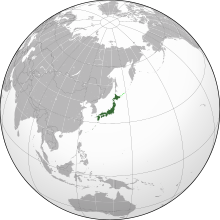 , of footless,
lighter-weight, hooded, one-piece animal costume pajamas, is known
there as disguise pajama or kigurumi (although the latter term
can also refer to costumes that are not intended as sleepwear).
, of footless,
lighter-weight, hooded, one-piece animal costume pajamas, is known
there as disguise pajama or kigurumi (although the latter term
can also refer to costumes that are not intended as sleepwear). MINOR VARIATIONS
Side zipper A rare alternative to the center front zipper is the "side zipper", running from the neckline near one shoulder (usually the left) to the outside or front ankle. This is most commonly found on sleepers with an elaborate printed design on the front, in which case it serves to avoid disruption of the image. An even rarer variation is to have zippers on both sides. Back zipper
 Although
back closings using buttons were common on sleepers made before the
1950s, zippers in the back are uncommon in regular children's
sleepers. A back zipper may make it difficult for the wearer to remove
the sleeper for bathroom use. Most examples in regular sleepers date
from the 1950-1970s as back zippers became less prevalent in the
1980s. Today, back zippers can most commonly be found on sleepers for
wearers where it is advantageous to prevent the wearer removing their
sleeper, especially those who wear diapers and have a tendency to
remove them. Self-fabric feet Sleepers made in sizes for infants
who are too young to walk often omit the slip-resistant soles on the
feet, instead having soles made from the same fabric as the rest of
the sleeper. This is also occasionally seen on sleepers for older
girls or women. Bound feet On sleepers made since the 1980s, the
soles of the feet usually attach to the upper foot pieces with an
inward-facing seam. In preceding years, it was more common for the
seam to face outward, and to be covered with a narrow strip of
material, forming a kind of ridge around the perimeter of the sole.
This design was referred to in advertisements as a bound edge or
bound foot , and was intended both to improve durability, and to
improve comfort by eliminating a potential source of irritation.
Molded plastic feet Around 1970, some sleepers were made with foot
bottoms made from three-dimensional molded plastic. This feature
proved unpopular, and was quickly abandoned. Detachable feet
Occasionally, rather than having permanently attached feet, sleepers
will come with separate feet, similar to slippers. This is more common
on adult sizes. Convertible feet Another variation replaces the
permanently enclosed feet with "convertible" foot coverings resembling
tube socks , that close at the ends with velcro , and can be rolled
back to expose the feet when desired. Hood Attached hoods were
occasionally seen on sleepers made before the 1920s, and as late as
the 1940s the company that made Dr. Denton brand sleepers offered
separate "sleeping hoods", designed to be used in conjunction with
their sleepers, in sizes for both children and adults. On modern
sleepers attached hoods are extremely rare, found only on a handful of
sleepers for older girls and women, and costume sleepers. Mittens
Attached mittens were occasionally seen on sleepers made for infants,
usually to prevent finger or thumb sucking, but also served the dual
purpose of keeping the hands warm. Mittens can also be used on costume
sleepers for both children and adults Quilted fabric Sleepers are
occasionally made from a quilted fabric, incorporating a thin layer of
polyester fiberfill batting for increased warmth. Quilted sleepers
using polyester foam as insulation were also made in the 1950s.
Elastic back waist Sleepers in larger sizes sometimes feature an
elastic band along the rear half of the waist, designed to provide a
better fit by reducing bagginess around the torso.
Although
back closings using buttons were common on sleepers made before the
1950s, zippers in the back are uncommon in regular children's
sleepers. A back zipper may make it difficult for the wearer to remove
the sleeper for bathroom use. Most examples in regular sleepers date
from the 1950-1970s as back zippers became less prevalent in the
1980s. Today, back zippers can most commonly be found on sleepers for
wearers where it is advantageous to prevent the wearer removing their
sleeper, especially those who wear diapers and have a tendency to
remove them. Self-fabric feet Sleepers made in sizes for infants
who are too young to walk often omit the slip-resistant soles on the
feet, instead having soles made from the same fabric as the rest of
the sleeper. This is also occasionally seen on sleepers for older
girls or women. Bound feet On sleepers made since the 1980s, the
soles of the feet usually attach to the upper foot pieces with an
inward-facing seam. In preceding years, it was more common for the
seam to face outward, and to be covered with a narrow strip of
material, forming a kind of ridge around the perimeter of the sole.
This design was referred to in advertisements as a bound edge or
bound foot , and was intended both to improve durability, and to
improve comfort by eliminating a potential source of irritation.
Molded plastic feet Around 1970, some sleepers were made with foot
bottoms made from three-dimensional molded plastic. This feature
proved unpopular, and was quickly abandoned. Detachable feet
Occasionally, rather than having permanently attached feet, sleepers
will come with separate feet, similar to slippers. This is more common
on adult sizes. Convertible feet Another variation replaces the
permanently enclosed feet with "convertible" foot coverings resembling
tube socks , that close at the ends with velcro , and can be rolled
back to expose the feet when desired. Hood Attached hoods were
occasionally seen on sleepers made before the 1920s, and as late as
the 1940s the company that made Dr. Denton brand sleepers offered
separate "sleeping hoods", designed to be used in conjunction with
their sleepers, in sizes for both children and adults. On modern
sleepers attached hoods are extremely rare, found only on a handful of
sleepers for older girls and women, and costume sleepers. Mittens
Attached mittens were occasionally seen on sleepers made for infants,
usually to prevent finger or thumb sucking, but also served the dual
purpose of keeping the hands warm. Mittens can also be used on costume
sleepers for both children and adults Quilted fabric Sleepers are
occasionally made from a quilted fabric, incorporating a thin layer of
polyester fiberfill batting for increased warmth. Quilted sleepers
using polyester foam as insulation were also made in the 1950s.
Elastic back waist Sleepers in larger sizes sometimes feature an
elastic band along the rear half of the waist, designed to provide a
better fit by reducing bagginess around the torso. BLANKET SLEEPERS IN POPULAR CULTURE
Poltergeist III Carol Anne (Heather O'Rourke),wears a red blanket sleeper with white buttons (instead of a zipper),from neck-to-crotch,as well as white vinyl soles and toecaps and white rib-knit sleeve-cuffs for the last two-thirds of the movie Ghostbusters II Baby Oscar wears a yellow blanket sleeper with a Winnie-the-Pooh applique in the night scenes towards the end of the movie Mystic Pizza Phoebe Travers (Porscha Radcliffe) wears a purple Carter's blanket sleeper with striped sleeve-cuffs about an hour into the movie A Christmas Story Ralphie (Peter Billingsley), gets a pink bunny costume sleeper,complete with bunny-ears on hood,attached mittens and bunny-slippers,from his crazy Aunt Clara "That worked under the delusion that I was perpetually four years old, but also a girl",on Christmas morning at the tail-end of movie.Little brother,Randy,wears printed blanket sleeper also at tail-end of movie Growing Pains Maggie Seaver (Joanna Kerns) wears a pink blanket sleeper with striped sleeve cuffs in a few episodes The Wonder Years Kevin Arnold (Fred Savage), wears a red blanket sleeper with striped sleeve-cuffs in a dream sequence in one episode The Torkelsons Mary Sue (Rachel Duncan), wears a blue blanket sleeper in one episode Almost Home (Spin-off series of The Torkelsons ) Mary Sue (Rachel Duncan), wears a red blanket sleeper with striped sleeve cuffs in a couple early episodes The Shining (1980 movie version) Danny Torrence (Danny Lloyd) wears a bright red blanket sleeper in night-scenes and morning scene towards the end of the movie Family Guy Peter Griffin sees, buys, and wears red adult-sized blanket sleeper he found at a department store and in next scene shocks everyone after rubbing sleeper-soles against carpet, causing static-cling in one episode. Baby Stewie wears a blue blanket sleeper in many episodes.
SEE ALSO
* Layette
RELATED GARMENTS
* Pajamas
 * Bunting
* Union suit
*
Pram suit
* Playsuit (children's clothing)
* Bunting
* Union suit
*
Pram suit
* Playsuit (children's clothing) * v * t * e
Psychophysiology : Sleep and sleep disorders (F51 and G47 / 307.4 and 327 )
SLEEP STAGES
* Rapid eye movement (REM) * Non-rapid eye movement * Slow-wave
BRAIN WAVES
* Alpha wave * Beta wave * Gamma wave * Delta wave
 *
Theta rhythm
*
Theta rhythm
 *
K-complex
*
K-complex
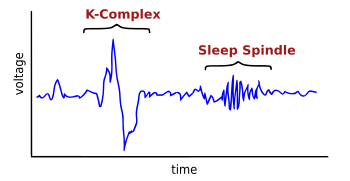 *
Sleep spindle
*
Sleep spindle
 *
Sensorimotor rhythm
* Mu rhythm
*
Sensorimotor rhythm
* Mu rhythm Sleep disorders
DYSSOMNIA
* Insomnia
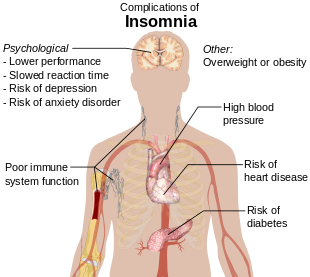 *
Narcolepsy
*
Narcolepsy
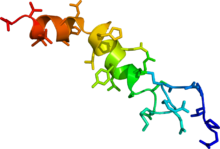
* Sleep apnea
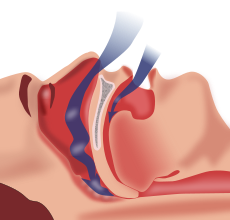
* Obesity hypoventilation syndrome
 *
Congenital central hypoventilation syndrome
*
Congenital central hypoventilation syndrome
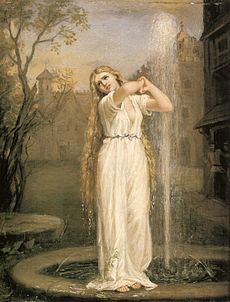
* Hypersomnia * Kleine–Levin syndrome * Sleep state misperception

Circadian rhythm disorder
* Advanced sleep phase disorder * Delayed sleep phase disorder
 * Irregular sleep–wake rhythm
* Jet lag
* Non-24-hour sleep–wake disorder
* Shift work sleep disorder
* Irregular sleep–wake rhythm
* Jet lag
* Non-24-hour sleep–wake disorder
* Shift work sleep disorder PARASOMNIA
* Catathrenia * Night terror * Rapid eye movement sleep
 behavior disorder
*
Sleepwalking
behavior disorder
*
Sleepwalking
 *
Somniloquy
*
Somniloquy
OTHER
* Night eating syndrome * Nocturia * Nocturnal myoclonus * Bruxism
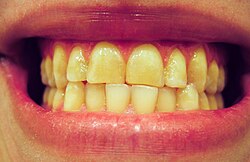
* Dream
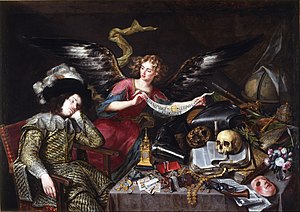 *
Exploding head syndrome
*
False awakening
*
Hypnagogia
/
Sleep onset
*
Hypnic jerk
*
Lucid dream
*
Exploding head syndrome
*
False awakening
*
Hypnagogia
/
Sleep onset
*
Hypnic jerk
*
Lucid dream
 *
Nightmare
*
Nightmare

 richo_43%2C_El_sue%C3%B1o_de_la_raz%C3%B3n_produce_monstruos.jpg/220px-Capricho_43%2C_El_sue%C3%B1o_de_la_raz%C3%B3n_produce_monstruos.jpg">
richo_43%2C_El_sue%C3%B1o_de_la_raz%C3%B3n_produce_monstruos.jpg/220px-Capricho_43%2C_El_sue%C3%B1o_de_la_raz%C3%B3n_produce_monstruos.jpg">Nightmare * Nocturnal clitoral tumescence * Nocturnal emission * Nocturnal penile tumescence * Sleep paralysis
 *
Somnolence
*
Somnolence
 *
Vivid dream
*
Vivid dream
Related topics
* Somnology

* Bed
* Bunk bed * Four-poster bed * Futon * Daybed * Hammock * Mattress * Sleeping bag
* Bed bug * Bedding
 *
Bedroom
*
Bedroom
 *
Bedtime
*
Bedtime toy
*
Bedtime story
*
Bedtime
*
Bedtime toy
*
Bedtime story
 * Chronotype
* Dream journal
* Excessive daytime sleepiness
* Hypnopompic state
* Lullaby
* Sleep induction
* Microsleep
* Nap
*
Nightwear
* Chronotype
* Dream journal
* Excessive daytime sleepiness
* Hypnopompic state
* Lullaby
* Sleep induction
* Microsleep
* Nap
*
Nightwear
 *
Biphasic and polyphasic sleep
*
Polysomnography
*
Biphasic and polyphasic sleep
*
Polysomnography
 *
Power nap
*
Power nap
 * Second wind
*
Siesta
* Second wind
*
Siesta
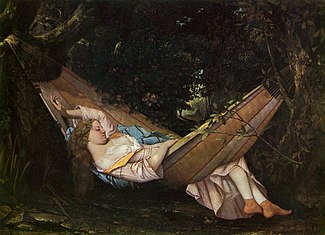 *
Sleep and creativity
*
Sleep and creativity
 *
Sleep and learning
*
Sleep debt
*
Sleep and learning
*
Sleep debt
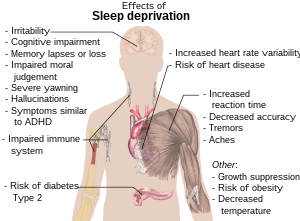 *
Sleep deprivation
*
Sleep deprivation
 *
Sleep diary
*
Sleep diary
 *
Sleep hygiene
*
Sleep inertia
*
Sleep medicine
*
Sleep hygiene
*
Sleep inertia
*
Sleep medicine
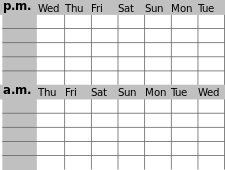 *
Sleeping while on duty
*
Sleeping while on duty
 *
Sleepover
*
Sleepover
 *
Snoring
* "Sleeping sickness "1
*
Snoring
* "Sleeping sickness "1* 1 Not a sleep disorder.
* v * t * e
Clothing
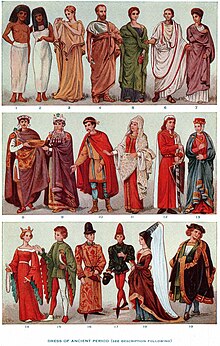
HISTORICAL CLOTHING • TRADITIONAL AND NATIONAL CLOTHING
TOPS
* Blouse
 * Crop top
* Dress shirt
* Guayabera
* Guernsey
* Halterneck
* Henley shirt
* Hoodie
* Jersey
* Polo shirt
* Shirt
*
Sleeve
* Crop top
* Dress shirt
* Guayabera
* Guernsey
* Halterneck
* Henley shirt
* Hoodie
* Jersey
* Polo shirt
* Shirt
*
Sleeve
 less shirt
*
Sweater
less shirt
*
Sweater
 *
Sweater vest
*
Sweater vest
 *
T-shirt
*
T-shirt
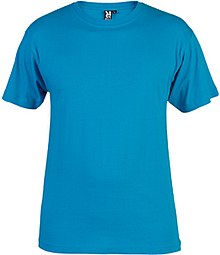 *
Tube top
*
Tube top
 * Turtleneck
*
Twinset
* Turtleneck
*
Twinset

Trousers
 and shorts
and shorts * Bell-bottoms
 *
Bermuda shorts
*
Bermuda shorts
 *
Bondage pants
*
Bondage pants
 *
Capri pants
*
Capri pants
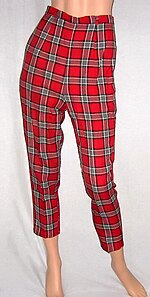 *
Cargo pants
*
Cargo pants
 *
Chaps
*
Chaps
 *
Cycling shorts
*
Cycling shorts
 *
Dress pants
*
Dress pants
 *
High water pants
*
High water pants
 * Lowrise pants
* Jeans
* Jodhpurs
* Leggings
* Overall
* Palazzo pants
* Parachute pants
* Pedal pushers
* Phat pants
*
Shorts
* Lowrise pants
* Jeans
* Jodhpurs
* Leggings
* Overall
* Palazzo pants
* Parachute pants
* Pedal pushers
* Phat pants
*
Shorts
 *
Slim-fit pants
*
Slim-fit pants
 *
Sweatpants
*
Sweatpants
 *
Windpants
*
Windpants
 *
Yoga pants
*
Yoga pants

SKIRTS
* A-line skirt * Ballerina skirt
 *
Denim skirt
*
Denim skirt
 * Men's skirts
*
Miniskirt
* Men's skirts
*
Miniskirt
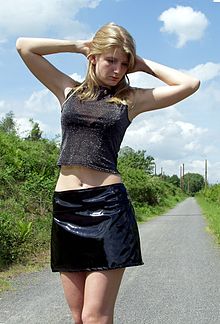 *
Pencil skirt
*
Pencil skirt
 *
Prairie skirt
*
Prairie skirt
 *
Rah-rah skirt
*
Rah-rah skirt
 *
Sarong
*
Sarong
 *
Skort
*
Skort
 * Tutu
* Wrap
* Tutu
* Wrap DRESSES
* Ball gown
 *
Bouffant gown
*
Bouffant gown
 *
Coatdress
*
Coatdress
 *
Cocktail dress
*
Cocktail dress
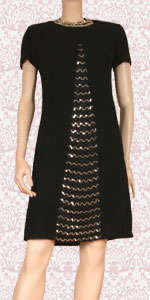 * Débutante dress
*
Formal wear
* Débutante dress
*
Formal wear
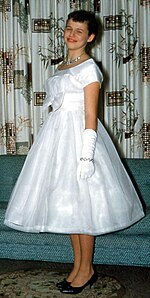 *
Frock
*
Frock
 *
Evening gown
*
Evening gown
 *
Gown
*
Gown
 *
House dress
*
House dress
 * Jumper
*
Little black dress
* Jumper
*
Little black dress
 *
Princess line
*
Princess line
 *
Sheath dress
*
Sheath dress
 *
Shirtdress
*
Shirtdress
 *
Slip dress
*
Slip dress
 *
Strapless dress
*
Strapless dress
 *
Sundress
*
Sundress
 *
Wedding dress
*
Wedding dress
 *
Wrap dress
*
Wrap dress

* Academic dress
 *
Ball dress
*
Ball dress
 *
Black tie
*
Black tie
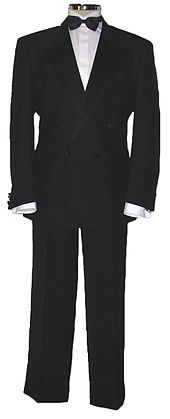 *
Boilersuit
*
Boilersuit
 *
Cleanroom suit
*
Cleanroom suit
 *
Clerical clothing
*
Clerical clothing
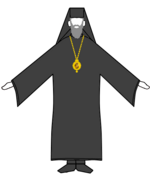 *
Court dress
*
Court dress
 *
Gymslip
*
Gymslip
 *
Jumpsuit
*
Jumpsuit
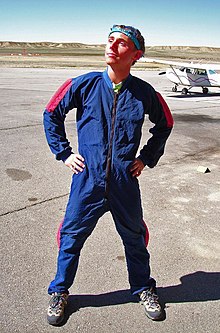 * Kasaya
* Lab coat
*
Military uniform
* Kasaya
* Lab coat
*
Military uniform
 *
Morning dress
*
Morning dress
 * Onesie
*
Pantsuit
* Onesie
*
Pantsuit
 *
Red Sea rig
*
Romper suit
*
Red Sea rig
*
Romper suit
 *
School uniform
*
School uniform
 * Scrubs
* Stroller
*
Tuxedo
* Scrubs
* Stroller
*
Tuxedo
 *
Vestment
*
Vestment
 *
White tie
*
White tie
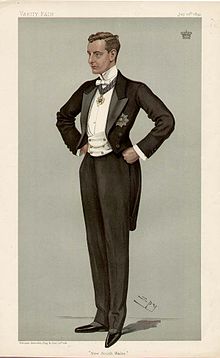
OUTERWEAR
* Apron
 *
Blazer
*
Blazer
 *
British Warm
*
British Warm
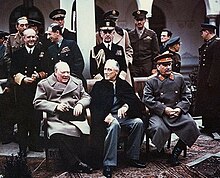 *
Cagoule
*
Cagoule
 *
Cape
*
Cape
 * Chesterfield
* Coat
*
Covert coat
*
Cut-off
* Chesterfield
* Coat
*
Covert coat
*
Cut-off
 *
Duffel coat
*
Duffel coat
 *
Flight jacket
*
Flight jacket
 *
Gilet
*
Gilet
 *
Goggle jacket
*
Guards coat
*
Harrington jacket
* Hoodie
* Jacket
*
Leather jacket
*
Goggle jacket
*
Guards coat
*
Harrington jacket
* Hoodie
* Jacket
*
Leather jacket
 *
Mess jacket
*
Mess jacket
 *
Opera coat
*
Overcoat
*
Opera coat
*
Overcoat
 *
Parka
*
Parka
 *
Paletot
*
Pea coat
*
Paletot
*
Pea coat
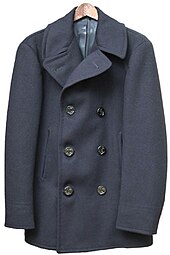 *
Poncho
*
Poncho
 *
Raincoat
*
Raincoat
 *
Robe
*
Robe
 *
Safari jacket
*
Safari jacket
 *
Shawl
*
Shawl
 * Shrug
*
Ski suit
* Shrug
*
Ski suit
 *
Sleeved blanket
*
Sleeved blanket
 *
Smoking jacket
*
Smoking jacket
 *
Sport coat
*
Sport coat
 *
Trench coat
*
Trench coat
 *
Ulster coat
*
Ulster coat
 * Waistcoat
* Windbreaker
* Waistcoat
* Windbreaker Underwear (lingerie )
TOP
* Bra * Camisole * Undershirt
BOTTOM
* Diaper
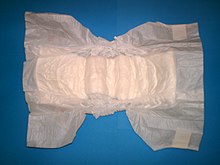 *
Panties
*
Panties
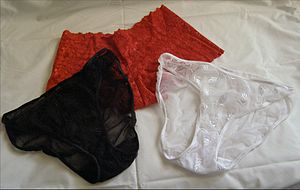 *
Plastic pants
*
Plastic pants
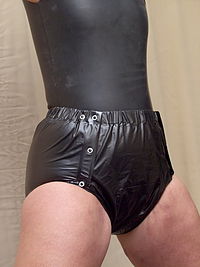 * Slip
* Thong
* Slip
* Thong * Underpants

* Boxer briefs
 *
Boxer shorts
*
Boxer shorts
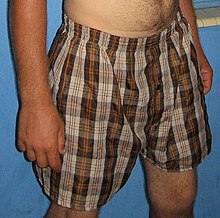 *
Midway briefs
*
Briefs
*
Midway briefs
*
Briefs

FULL
* Bodysuit

* Infant
* Long underwear
 * Playsuit
* Teddy
* Playsuit
* Teddy FOOTWEAR
* Athletic shoe * Boot * Court shoe * Dress shoe * Flip-flops * Hosiery * Sandal * Shoe * Spats * Slipper * Sock
 *
Stocking
*
Stocking

HEADWEAR
* Baseball cap
 *
Beret
*
Beret
 * Cap
*
Fedora
* Cap
*
Fedora
 *
Hat
*
Hat
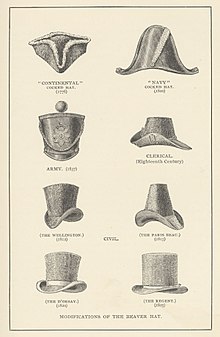 *
Helmet
*
Helmet
 * Hood
*
Knit cap
* Hood
*
Knit cap
 *
Toque
*
Toque
 *
Turban
*
Turban
 *
Veil
*
Veil

NIGHTWEAR
* Babydoll
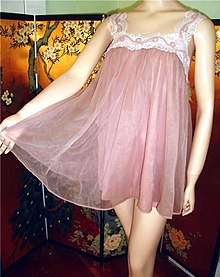 * BLANKET SLEEPER
*
Negligee
* BLANKET SLEEPER
*
Negligee
 *
Nightgown
*
Nightgown
 *
Nightshirt
* Pajamas
*
Nightshirt
* Pajamas SWIMWEAR
* Bikini
 *
Boardshorts
*
Boardshorts
 *
Dry suit
*
Dry suit
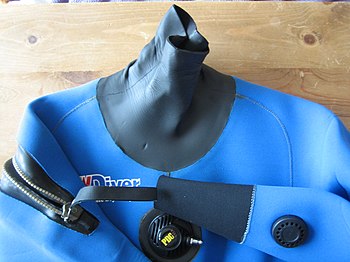 *
Monokini
*
Monokini
 * One-piece
*
Rash guard
* One-piece
*
Rash guard
 * Square leg suit
* Swim briefs
* Swim diaper
* Trunks
* Wetsuit
* Square leg suit
* Swim briefs
* Swim diaper
* Trunks
* Wetsuit ACCESSORIES
* Belt * Bow tie * Coin purse * Cuff
 link
*
Cummerbund
link
*
Cummerbund
 *
Gaiters
*
Gaiters
 *
Glasses
*
Glasses
 *
Glove
*
Glove
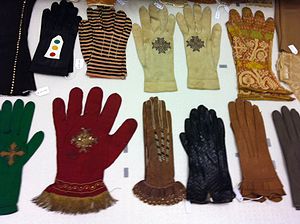 s
*
Headband
s
*
Headband
 *
Handbag
*
Handbag
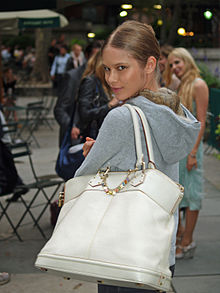 *
Jewellery
*
Jewellery
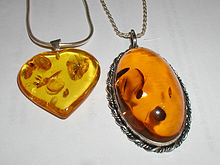 *
Kerchief
*
Kerchief
 * Muff
*
Necktie
* Muff
*
Necktie
 *
Pocket protector
*
Pocket protector
 *
Pocket watch
*
Pocket watch
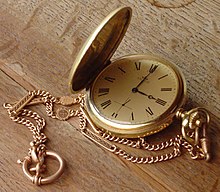 *
Sash
*
Sash
 *
Scarf
*
Scarf
 *
Sunglasses
*
Sunglasses
 *
Suspenders
*
Suspenders
 * Umbrella
* Wallet
* Wristwatch
* Umbrella
* Wallet
* Wristwatch * Clothing technology * Clothing terminology * Costume * Dress code * Fashion
 * History of clothing
* History of clothing

No comments:
Post a Comment